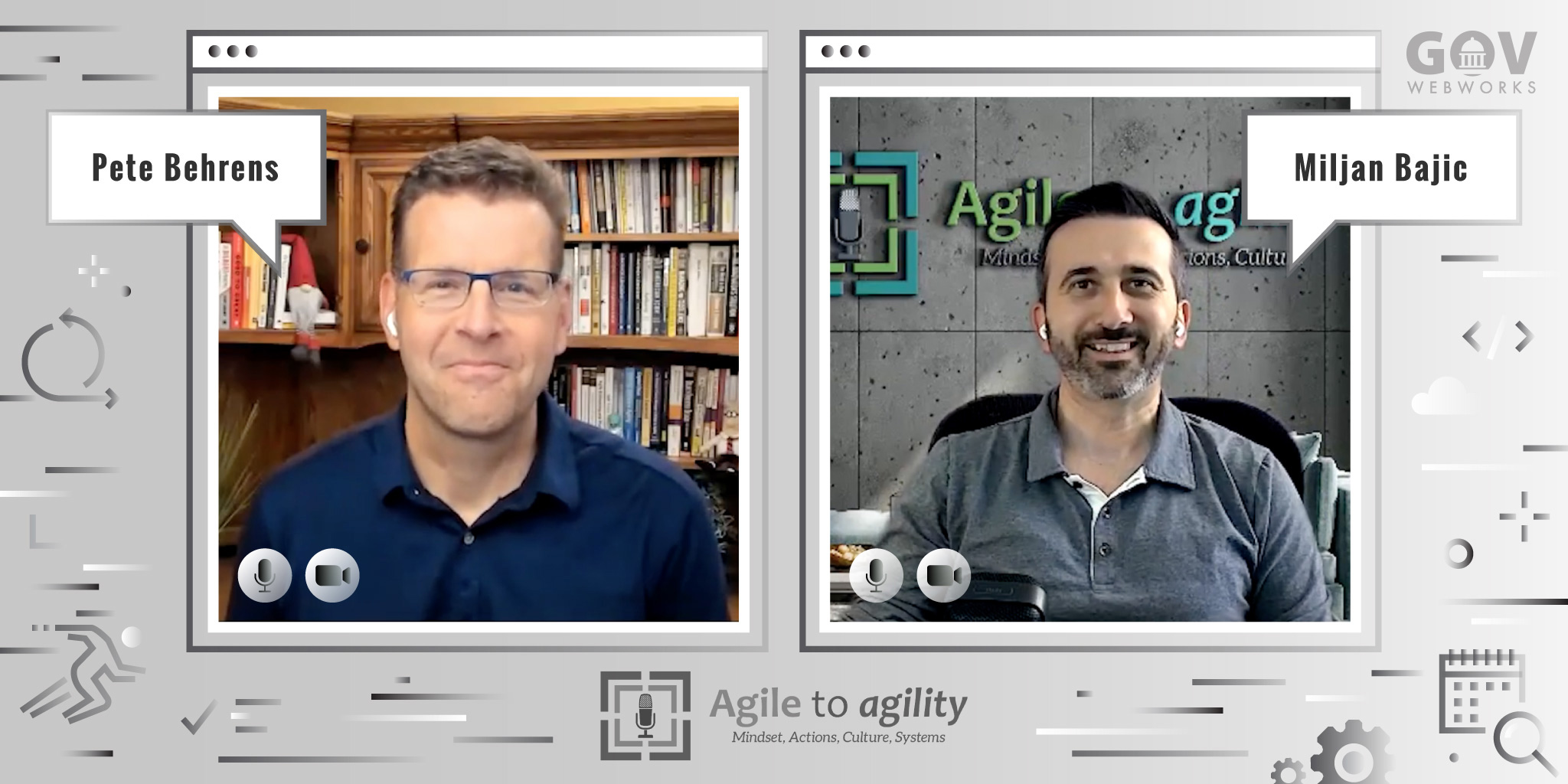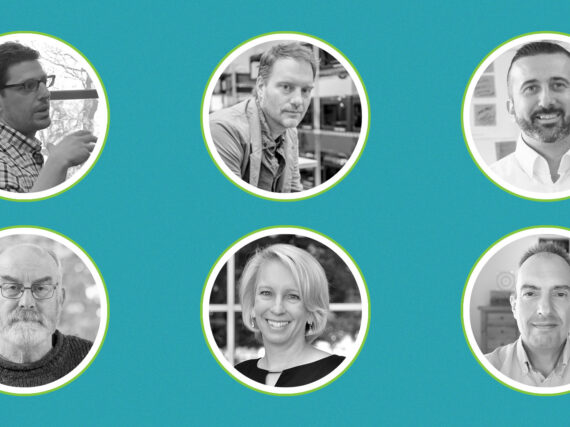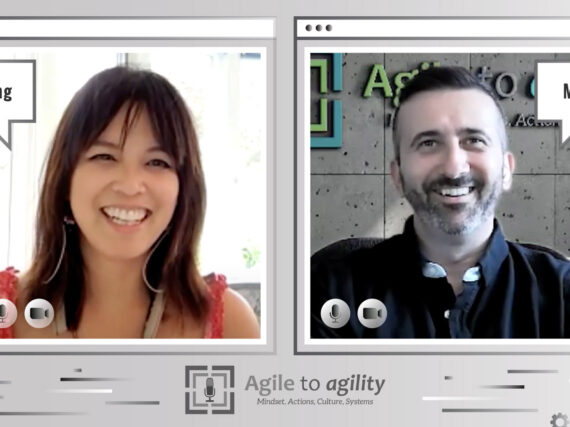What are the leadership capabilities that allow a leader to be most effective with less energy exerted? It’s a million dollar question, and Pete Behrens, Certified Agile Leadership (CAL) Educator, is helping each leader to find the answer for him or herself.
“Unless leaders do their own development, they are less likely to create business transformation,” Behrens says in his talk on Five *Oops!* Six Mistakes You are Making as a Leader.
“We often as leaders focus on others,” he adds. “When in fact, we should be focusing first on ourself. When we focus on ourself and develop ourself, the organization comes along with us.”
To help leaders embrace this challenge, Behrens has worked to educate agile leaders since 2011 and developed the CAL certification program for the Scrum Alliance in 2016. As a Certified Leadership Agility 360 Coach, he strives to provide awareness, education, and guidance to leaders to help them achieve increasing impact and agility.
In this issue of Agile to Agility Highlights, Miljan Bajic and Behrens discuss how awareness can help leaders to develop and grow themselves and their organizations.
How do you define leadership?
I like to think if it as the act of leading, the act of influence, of alignment, of getting a group of people doing something valuable. It’s something everyone does whether they are aware of it or not.
Leadership is about how do I do things with people better, how do I connect better?
What does situational leadership mean to you?
Situational leadership is about agility. If we go back to the root of what an agile process is, it’s an empirical process, an inspect-and-adapt process. It’s about I have data, so let me make a decision based on that, versus I’m going to guess what to do.
As a leader matures, they start to develop layers, I don’t want to say personas, but there’s depth to a leader as they develop. A leader with one level of depth has a hard time situationally adapting, they only have one tool, one hammer, so everything’s a nail. When they build another layer, now they have a screwdriver. Situational leadership is the ability to adapt your approach to the situation. Situational leadership is not helpful without a choice of tools.
Why is awareness important for a leader?
If you go to any expert or read any of the books on the topic, at the heart of what you are going to find there is self awareness. This is where my understanding of myself will help me understand how to apply that self or some layer of that self in various situations. I’ve done some study under David Rock, an expert aggregator on the topic, that has informed me about cognitive awareness and meta cognition, that second cognition system running in our head, telling you wait, you shouldn’t be doing it, but you are doing it. And how much do we listen to that?
All leadership development at its root is really getting towards, are you aware? And how do you develop that awareness, how do you leverage it to be a better leader?
What are some of the coaching techniques you use to develop awareness?
When we teach we go back to history. If you go back to nomadic times, before agriculture, leadership was a pay for play service. If you as a leader did something for a tribe, if you hunted, or you protected, or if you were a good procreator, you got things like the better tent, or the better meat. You got prestige because you did something.
Move up now to agriculture and cities, and we started to build these walls. I believe today, most corporations are still built on a Game of Thrones model of castles and kings and queens. But when you look at the human brain science and history behind us, our brains were built for the autonomy of nomadic times. Back then, when you were my leader and you provided service, great. But if you started to steal from me, or you started to do stuff and you didn’t deserve it, I’d just kill you. Or I’d run away and start my own tribe and then I’d kill you. We had autonomy. The problem happened when we built these kingdoms and castles and people were no longer safe to leave. Because as soon as they left they had no power and they got killed. All of a sudden you didn’t get to choose your leader anymore.
So the rules of the game changed?
Right. The brain is still thinking “autonomy,” but the system has changed. The point of the story is if we don’t understand history, and the roots of who we are as humans, it’s hard to put things in context today. So whether it is post-heroic leadership or servant leadership, if you don’t put them in context, leaders have a hard time recognizing the value.
Though history, we get a better understanding of ourselves, and understanding my self individually helps determine how I lead in a given context.
For myself, the last thing I want is a theory. I want tools, I want pragmatic things that are meaningful. Most of the leaders that we interact with have a rich technology centered brain, they are thinkers rather than feelers, they like to process things, they don’t like to waste time, and they don’t want a lot of bureaucracy. They want to get to the point, you know, “Let’s go.”
Einstein says, “All models are wrong, some are useful.” Something like Bill Joiner’s work is useful. It’s a model, of course, but I find it to be incredibly valuable to help leaders to see themselves. Even after one hour work with the model, leaders start to see, “Oh crap, I’ve been manipulating, I didn’t realize I was manipulating!”
There’s so much bad leadership because of lack of awareness, not because of intentional misdeeds.
How do you help leaders shape the culture?
What we talk about is the micro culture and the macro culture. When I say we, I mean the Agile Leadership Journey, and this we is a reflection of I, since I helped to create it. Things used to be all about macro stuff, posters on the wall to restructure the organization, but that is incredibly hard and expensive, and takes the top level leader to make really big cuts through the organization that will have a huge impact, positive or negative.
What I think a lot of leaders miss, and what we try to inspire in leaders, is the micro culture. Every leader, at every position in the organization, can influence a decision, a meeting, a dialogue, a conversation. It’s in these micro moments that culture really lives. This is where a leader shows up. Not in the values that we put on the posters or website. But in how does a leader exhibit that value in this meeting or conversation?
Can you provide an example of micro culture?
In one of my sessions, a senior leader said he told his team, “I think the problem is skills, We don’t trust our team because they don’t have enough skills.” At that moment, everyone shut up. He was asking,”What do you think?” and nobody responded. So I asked the leader to step back and reflect on what power style are you demonstrating there? The leader realized the previous day that he had asked an open ended question and there was all sorts of conversation. It was one of those micro moments of being able to notice the difference in those two dialogues. The open-ended conversation and the rich dialogue, the closed question and how that impacted everyone’s ability to feel safe contributing. Behavior of others stems from my own awareness on what does it take to create empowerment or engagement or input into this conversation?
We like to start with the leader. The organization reflects what the leaders are doing. If the leader sees disengagement, the leader is part of the system that is creating disengagement.
Anything an organization does will be trumped by whatever the leadership is doing. So what we try to do is hack into that leadership change the dynamic, then we can enable the traditional agile stuff to happen. It’s about creating the awareness that the leader is being mirrored by those around him or her.
Where do you see agile coaching going?
Certainly, I don’t put myself up as a futurist, but I think the writing is on the wall. Scrum is commoditizing. That’s part of my reason for getting out. So what’s the next wave? We’ve got to focus on leadership. The systems are becoming more complex, more remote, more dynamic. Scrum is a tool, but how the system works, that’s to me where the meaning is.
As a coach, I really enjoy the complexity and the co-creation we have with our clients. We’re not coming in here to tell you how to do your business. We’re coming in here to teach you leadership and help co-create with you a new business, to be a catalyst. If there’s only the teacher teaching, you lose a lot. It’s about bringing out the power in an organization.
What do you recommend for people who are inspiring to get better at agile leadership?
Explore outside your bubble. We all need to continuously re-learn, to rethink how we are doing things today because it will change in next six months. We have to be on that same growth curve.
We started a podcast called (Re)learning Leadership. Our goal is to bring in interesting problems, discuss how we are re-thinking them, then help leaders understand how they could apply that in their world.
What keeps me engaged is all the creativity that’s going on in the world and finding different ways to do the problems we’ve been faced with for decades.
Learn more
- Contact GovWebworks to learn more about implementing Agile practices for a project or team
Listen to the Agile to Agility podcast:
- Pete Behrens: Leadership, Culture, and Behaviors, Agile to Agility with Miljan Bajic
Listen to Pete Behrens’ podcast:
- (Re)Learning Leadership: A Leadership Podcast for a Disruptive Economy
Get training or coaching:
- Book a leadership workshop with Pete Behrens at Trail Ridge
- Learn about Agile Leadership Journey







